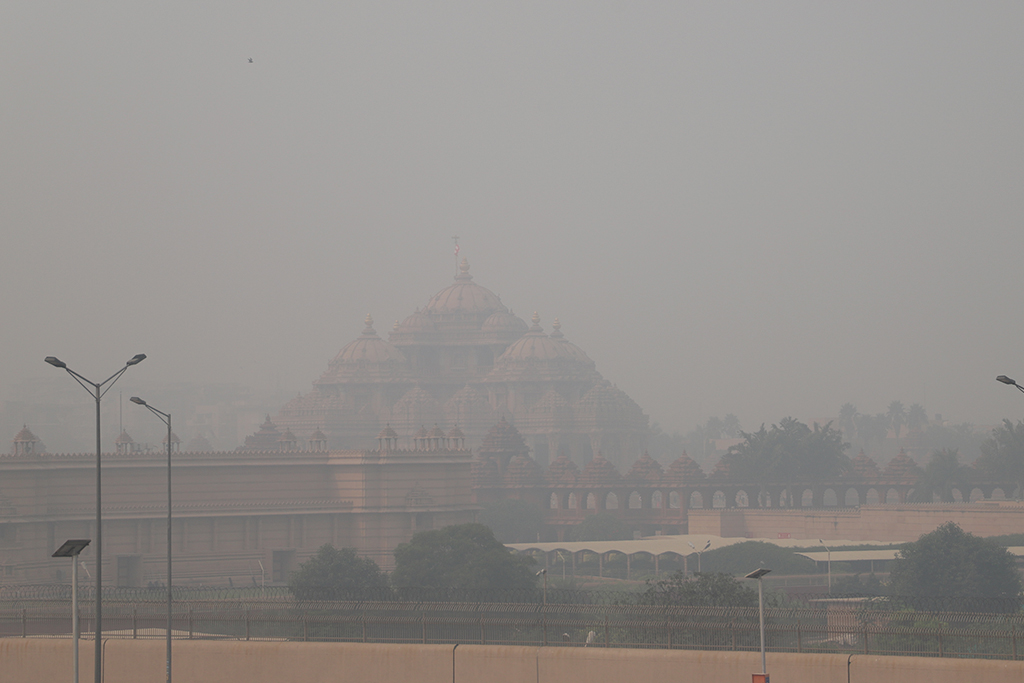Ad-hoc actions by government fail to curb Delhi’s air pollution

Air pollution in Delhi and neighbouring areas has scaled new peaks in 2021 (MIG photos/Aman Kanojiya)
Citing many violations of the pollution norms by a multitude of commercial units across the National Capital Region, last week the Commission for Air Quality Management (CAQM), set up by the Supreme Court, suspended operations of over a hundred factories in Delhi and neighbouring regions during the weekend. It said that industrial and construction units were the main contributors to the pollution.
The decision to close the units came after a task force commissioned by CAQM, constituting 40 flying squads, conducted ground-level incognito checks at industrial units, construction and demolition sites, and other air pollution hotspots.
On obtaining an alarming report from the task force another decision was taken by the commission to suspend the operations for the industrial units which have been running their operations on fuels other than PNG or other cleaner fuels till December 12, 2021.
However, the decision failed to impress activists who say that while these measures may curb air pollution that has been nearing record highs all through autumn and winter this year, long-term measures are needed for the issue. Vivek Chattopadhyay, senior programme manager, Clean Air Programme, Centre for Science and Environment, New Delhi feels shutting down industrial units is a very short-term strategy. “The government must augment these industries by ensuring that they connect to the pre-existing pipelines for fuels and other cleaner alternatives as these units will have to be opened sometime in the later stages and just shutting them down and waiting for the nightmare of the pollution to be over every year is not the answer to the problem,” Chattopadhyay tells Media India Group.
Besides better regulation by the government, checking air pollution also needs proactive participation by ordinary citizens, says Chattopadhyay. He outlines several micro-level initiatives needed to limit pollution. “We now have to get into micro-level planning. Areas which are heavily polluting or areas which are hotspots, where are the connections, in which units have the things not changed, more concentration is needed because the government has made broad level policies, but the implementation and enforcement remains the challenge. That is the reason why this crisis happens every year,” says Chattopadhyay.
As construction is also a major contributor to air pollution, Chattopadhyay appreciates the move by Delhi Metro Rail Corporation (DMRC) to install smoke guns at their project sites. But, installing machines is not the solution, he says. “If loose dust is not taken care of then how many smog guns will you install? The primary focus should be on management. If the site is huge for instance, then installing only one (smog) gun will not help. First, you must place a proper system for dust management then if there are any dust particles suspended then the smog guns will come in handy,” Chattopadhyay adds.
Another major challenge in curbing air pollution is the mounting level of garbage in the NCR as well as in other metros of the country. As garbage disposal, for now, is limited to dumping all sorts of garbage at landfills, it leads to a significant amount of pollution. This is because, for now, burning the garbage seems to be the only trick under government’s hat. “It’s a legacy problem because for past so many years it was not managed so it has accumulated, so now they have to segregate and reduce it. At the same time, source-wise segregation initiatives also haven’t been put in place. If the waste is collected and mixed, then segregating it is a tedious job. There must be some education or some incentivisation or some kind of penalties against mixing garbage. They also need to then put in place a supply chain system to have the waste sorted out and recycled properly so generation of new waste will be reduced. Otherwise, again the landfill problem will remain,” says Chattopadhyay.
To rid the city of the garbage menace, systematic management and clarity in steps involved is needed. “Proper scientific disposal and recycled reused facilities is the solution to the problem, not landfilling and waste-to-energy,” says Chattopadhyay.
Despite numerous attempts, Gopal Rai, Minister of Environment, Forest & Wildlife, Development and General Administration in Government of Delhi, was not available for comments.









